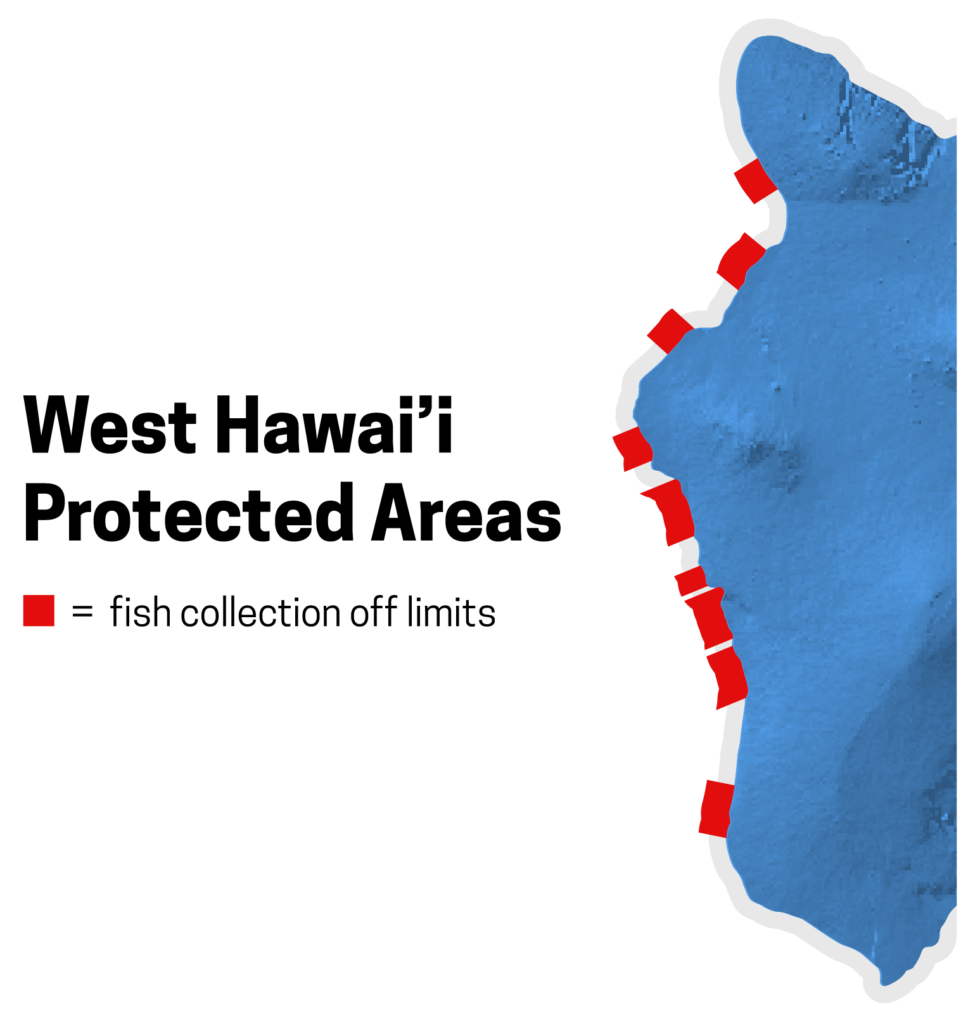Aquarium fish collection is no simple task. It requires many specialized tools and highly trained fishery experts to safely collect and transport the fish while maintaining the health of the reef.
First, collectors must abide by regulations. Fish collection areas are the most highly regulated fisheries in Hawai’i. Much of the coastline is off-limits.

To start collection, trained divers swim along the reef with a barrier net. This lightweight net bounces along the reef without damaging it. The divers work to corral the fish into the nets.
Divers sort through the catch to remove any fish that were caught unintentionally. This includes fish of a different species, or fish that are too old or young to be collected. For instance, larger Yellow Tang of reproductive age are not collected, which helps ensure the growth of the fish population overall.
Catching the fish is only the first step.
The fish are placed in containers where they will slowly work their way up to the surface. This slow process of decompression ensures that the fish’s swim bladder can adjust to the air pressure at sea level.
After the fish is treated and placed in their containers, the fishery team rushes them back to shore where they can be placed in state-of-the-art life support systems where they stay for several days before they are shipped to their new homes.
Fish are packaged in double-lined bags that have been approved by aquatic veterinarians to ensure safe transport. Each bag has a precise level of oxygen and space for the fish to swim around. The fishery experts withhold food from the fish immediately prior to their relocation to ensure the water stays fresh throughout the trip. Fish are packaged in such a way that they can survive up to 24 hours of delays.
This transportation process has been perfected over decades and ensures that fish arrive at their destination safely.
Due to managed practices, fish collection is sustainable. See the numbers here.
